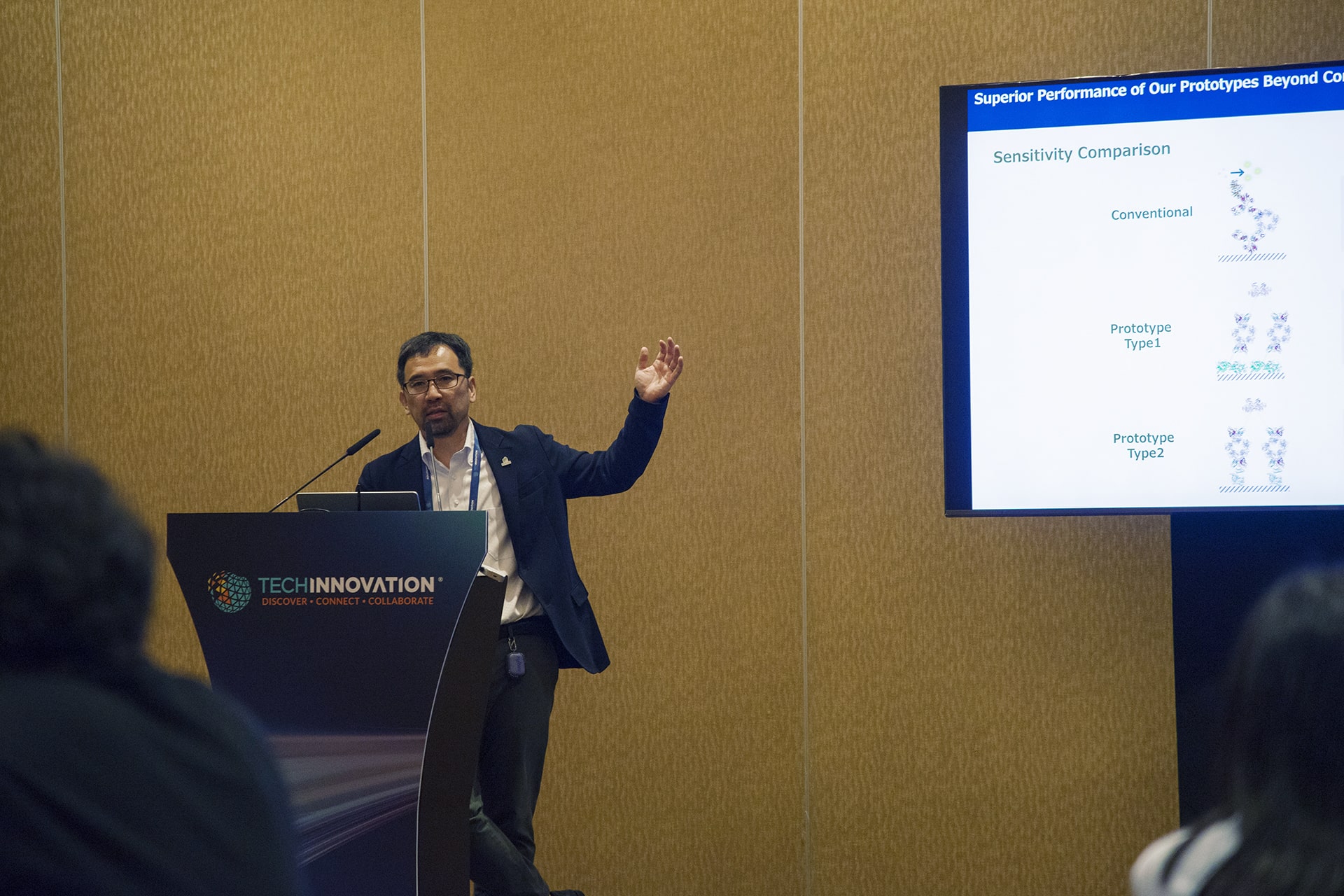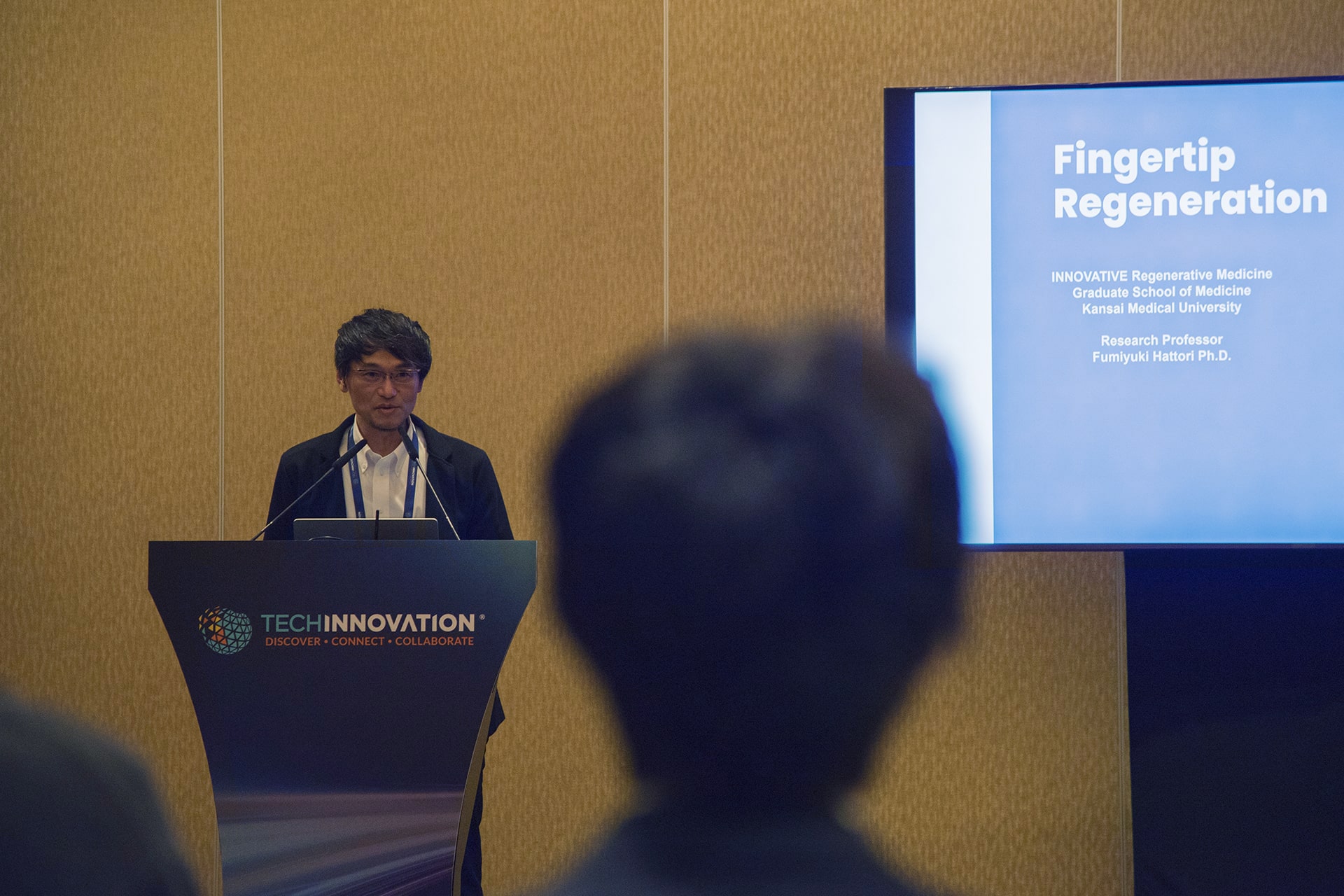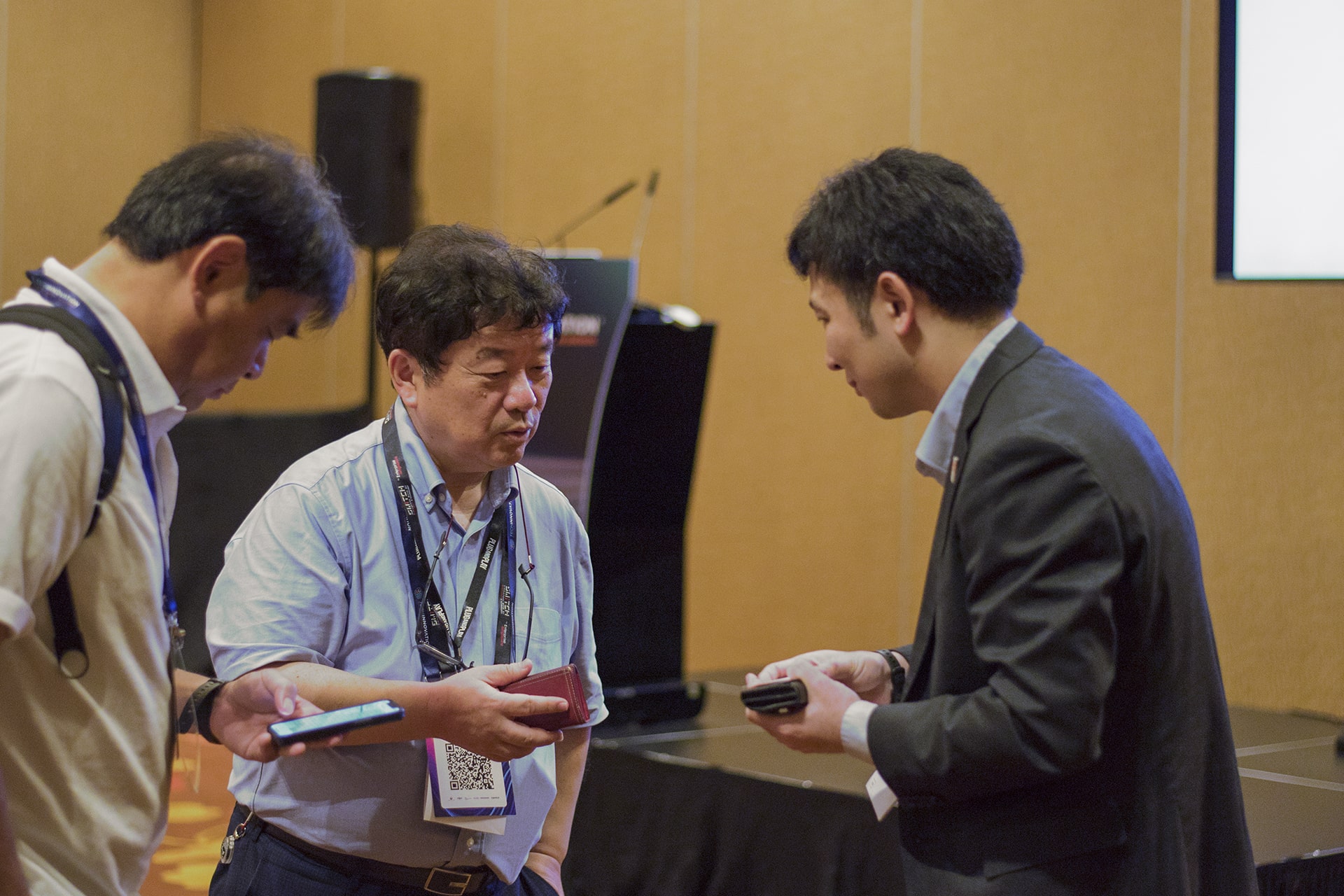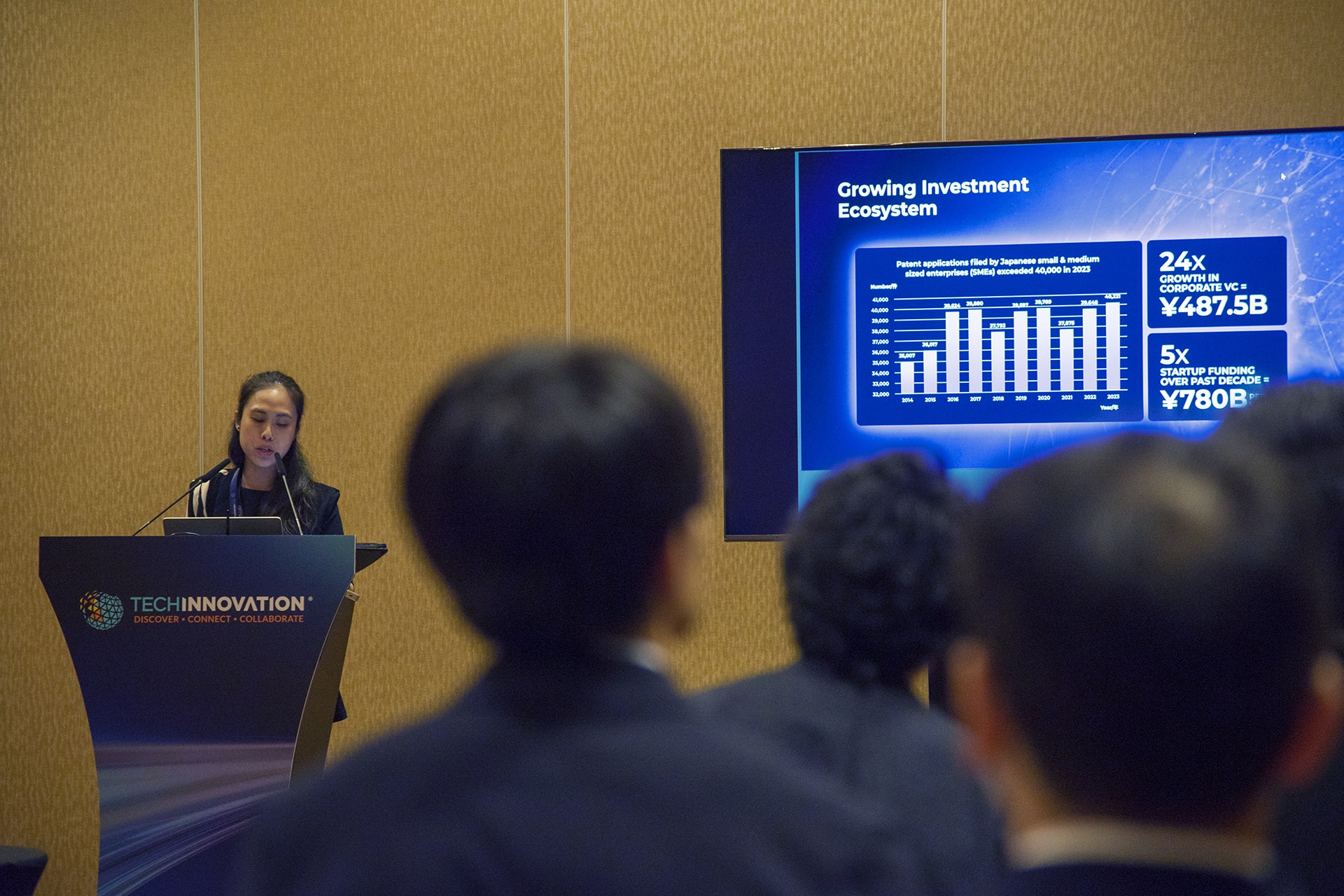On October 29, the Kansai Startup Academia Coalition (KSAC) hosted “From Lab to Global Stage: Kansai Deep Tech Showcase” at Marina Bay Sands in Singapore. The event was held as part of TechInnovation 2025, a program organized by IPI Singapore, an innovation-focused subsidiary of Enterprise Singapore.
The showcase built on its inaugural run alongside last year’s TechInnovation, extending KSAC’s mission to foster a cross-border innovation ecosystem that links Kansai-based researchers with international partners and markets. The program highlighted how academia-driven deep tech research from Japan’s Kansai region is positioning itself for global relevance, particularly in healthcare and sustainability.
Showcasing Kansai’s scientific depth
This year’s lineup featured researchers working across cutting-edge fields, including healthcare. Yoichi Kumada and Fumiyuki Hattori presented studies on novel recombinant antibody fragments and therapeutics derived from nail stem cells, respectively. Kumada’s research could pave the way for faster disease detection and diagnostics, while Hattori is targeting fingertip restoration as an early application of stem cell-based regenerative therapy.


Complementing the healthcare focus were presentations by Onuma Chumsakul, Kentaro Yaji, and Daiki Watanabe. Chumsakul discussed biopolymers designed to reduce reliance on fossil-based materials. Yaji introduced a platform for energy-efficient design to help lower industrial emissions, while Watanabe outlined a pathway toward next-generation biomanufacturing systems. Together, their projects highlighted sustainability as a vital counterpart to healthcare in Japan’s deep tech agenda.



Healthcare and sustainability focus aligns with regional realities
Singapore provides a natural setting for healthcare-focused collaboration. Like Japan, its population is rapidly aging, placing pressure on its healthcare infrastructure and driving up spending. According to World Bank data, Singapore’s healthcare expenditure per capita has climbed steadily from USD 796 in 2000 to USD 4,320.5 in 2022, mirroring its rising median age.
Across Asia, similar patterns are unfolding. The region’s healthcare sector is evolving rapidly, driven by a mix of demographic, technological, and economic factors. A report by Boston Consulting Group projects that the Asian healthcare market could expand to USD 5 trillion by 2030, driven by new medical technologies and evolving patient needs. Yet, these opportunities come with the challenge of navigating Asia’s diverse and fragmented markets, each with distinct regulatory and cultural nuances that demand localized strategies.
In sustainability, Southeast Asia faces even greater urgency. The region is among the most vulnerable to climate change and must contend with rising emissions, limited resources, and the need for technologies that decarbonize without impeding economic growth. ASEAN continues to uphold its commitments under the United Nations Framework Convention on Climate Change, adapting them to national circumstances. This was reaffirmed at the bloc’s latest summit, underscoring the relevance of the sustainability research presented at the KSAC showcase.
These intertwined challenges in healthcare and sustainability highlight the importance of initiatives such as KSAC, which connect academic research with practical application. By linking researchers to global partners, such programs help translate Japanese discoveries into solutions tailored for the wider region.

Japan’s innovation engine remains strong
Japan remains one of the world’s most prolific sources of IP. According to the World Intellectual Property Organization, Japan filed 414,479 patent applications in 2023, ranking third globally behind only China and the US. That figure nearly equals the combined total of the next two countries: South Korea (288,001) and Germany (133,140).
In a keynote opening the KSAC session, Gwendolin Mah, head of international programs at MedTech Actuator, noted that around 40,000 of Japan’s annual patent filings originate from startups. This, Mah said, reflects the country’s growing momentum in startup-led innovation, supported by both corporate venture capital (CVC) and private funding.
Mah added that Japan’s CVC investments reached JPY 487.5 billion (USD 3.2 billion) in 2023, while startup funding totaled JPY 780 billion (USD 5.1 billion). These figures signal a strengthening innovation pipeline that aligns with Japan’s national targets of fostering 100,000 startups and 100 unicorn companies by 2027.

Kansai’s legacy of scientific excellence
The Kansai region plays an outsized role in Japan’s innovation story. More than half of the country’s Nobel laureates hail from Kansai, underscoring the area’s enduring academic strength. Kyoto University, for instance, has produced more Nobel laureates than any other university in Asia.
That legacy was reaffirmed this year when professor Shimon Sakaguchi from the University of Osaka received the 2025 Nobel Prize in Physiology or Medicine. Sakaguchi shared the accolade with US researchers Mary Brunkow and Fred Ramsdell for their work on peripheral immune tolerance, the mechanism that prevents the immune system from attacking the body. Their findings have reshaped understanding of autoimmune diseases and immunotherapy.
With more than 90 member institutions and growing, KSAC’s network continues to expand, attracting interest from academia, industry, and investors alike. Kansai’s ecosystem remains at the heart of this progress, supported by a strong academic base, active public-private partnerships, and a shared commitment to scaling homegrown technologies for global markets.
This article was published in partnership with the Kansai Startup Academia Coalition (KSAC).
